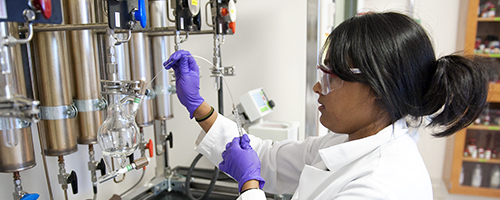Document Type
Article
Publication Date
7-1-1996
Publication Title
Investigative Ophthalmology and Visual Science
Abstract
Purpose: Contrast-enhanced proton magnetic resonance imaging ( 1H MRI) has been used as a quantitative, noninvasive method to corroborate a pathway for the diffusion of plasma-derived protein into the aqueous humor in the normal rabbit eye. Methods. T1-weighted magnetic resonance images were produced over 1- to 3-hour periods after the intravenous injection of gadolinium diethylenetriamine-pentaacetic acid. Results. Analysis of the images yielded the time dependence of signal enhancements within the areas of interest. The ciliary body showed an immediate sharp increase, followed by a gradual decrease in signal enhancement with time. Although a gradual increase in signal enhancement was found in the anterior chamber, no significant change occurred in the posterior chamber. A similar MRI experiment with an owl monkey produced parallel, though smaller, signal enhancements in the ciliary body and anterior chamber. Again, however, no significant change was found in the posterior chamber. Conclusions. These results support and extend those of recent fluorophotometric, tracer-localization, and modeling studies demonstrating that in the normal rabbit and monkey eye, plasma-derived proteins bypass the posterior chamber, entering the anterior chamber directly via the iris root.
Keywords
aqueous tumor, blood-ocular barrier, ciliary body, magnetic resonance imaging, posterior chamber, rabbit eye
Volume
37
Issue
8
First Page
1602
Last Page
1607
ISSN
01460404
Version
Version of Record
Recommended Citation
Kolodny, Nancy H.; Freddo, Thomas F.; Lawrence, Barbara A.; Suarez, Cristina; and Bartels, Stephen P., "Contrast-Enhanced Magnetic Resonance Imaging Confirmation of an Anterior Protein Pathway in Normal Rabbit Eyes" (1996). Chemistry: Faculty Publications, Smith College, Northampton, MA.
https://scholarworks.smith.edu/chm_facpubs/83


